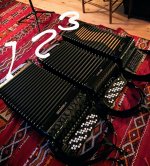petch
Well-known member
I would imagine Rolands go the same way as retro computers and video game consoles, where they might become sought after decades later but only by the people nostalgic for them. They don't even have the collectability factor that other retro electronics have. Everyone else knows they're extremely obsolete and even if you get one in working condition, it's nowhere near as good as the current technology (is anyone using their AMSTRAD for data entry today?)
Given that Rolands already split opinions, I don't see there being many people nostalgic for the 'Roland accordion sound' in 2050!
Given that Rolands already split opinions, I don't see there being many people nostalgic for the 'Roland accordion sound' in 2050!


